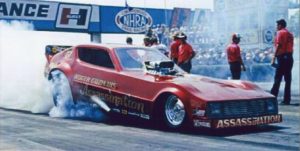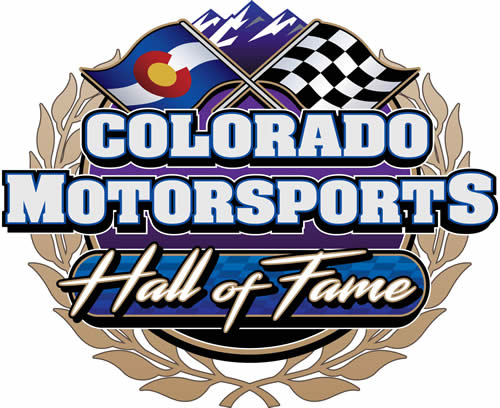Rob “Robby” Williams grew up on a farm in Keenesberg, Colorado, surrounded by mechanical devices and people who knew how to work on them. At age 12, his grandfather gave him a twin-engine go-kart; at age 14 he purchased a Harley Davidson Super 10 motorcycle, from which he graduated to the Harley Sportster that became his first drag racing vehicle.
Rob was hired by IBM as a machinist after he graduated from high school in 1965. He also worked part-time at Seyfer Engineering in Arvada, and the extra money in his pocket meant money for racing. He saw a 1966 Dodge Coronet 426 Street Hemi advertised in a magazine and rushed to a Denver dealer. “They’d never heard of the car. They scratched their heads and looked at each other. I was just young kid, but suddenly I was the expert.”
He ordered the car and took delivery, but only drove it a few times at the track before he flattened the cam. The Coronet wasn’t fast enough, so in 1968, he bought a dragster chassis from Dan Widener in Colorado Springs and dropped in the 426 Hemi to run as an A-fuel dragster. Next came the blower from “Doc” Shaddock’s old car, and Rob was in an AA-top fuel dragster. Racing with the support of his younger brother Rex and high school friends Kenny Bollers and Duane Koons, Rob had enough success to order a brand new chassis from builder Mark Williams.
Rob was racing Colorado tracks like Continental Divide Raceway, Mountain View, Thunder Road and Century 21, and regionally at tracks from Salt Lake City, Utah, to Liberal, Kansas. He was winning events and setting track records, and doing well enough to be invited to the NHRA World Finals at Amarillo. By 1972, he was looking at top-fuel funny cars because he figured, “That’s where the money was.”
His next purchase was Don Hardy’s Barracuda, beautifully repainted by Ron Avers as the Williams Brothers funny car. “Bit by bit, there was less left of the original 426 Hemi,” Rob remembers, “until finally it was just the block and the heads. I was running 100% nitro methane in those days, but only because I didn’t have a hydrometer to calculate a mixture. I was just running fuel straight out of the barrel.” The ‘Cuda became a fixture at match races and points events, and took Rob back to the NHRA World Finals before being replaced by Ed Bowen’s Vega in 1974, that had Rob’s name alone on the side.
It was getting harder to keep a crew together, and to stay in racing Rob found himself sometimes driving for other car owners or working as part of the crew on someone else’s car. One of the men he crewed for was Roger Guzman, who had become legendary in the region for his series of funny cars named Assassination. When Ron Kershal asked Roger how to make his Monza “Super Rat” funny car more successful, Roger’s recommendations were to replace the Chevy engine with a Dodge, and replace the driver with Rob Williams. The new combination was a winner, and by mid-season 1977, the Super Rat/Assassination had clinched the Division 5 championship.
For the next season, Guzman unveiled the first of the series of beautiful Dodge cars that would burn themselves into the memories of race fans from Indianapolis to Pomona. Build by Pat Foster and Jim Hume side by side with Don Prudhomme’s car, Assassination became nearly unstoppable in NHRA’s Division 5. Young men such as Steve McClean, Ron Roybal, Alex Vigil, and Bobby Etter volunteered their time to be the crew. Rob and Roger would trailer the car to tracks throughout the region, driving back to Denver in time for work at IBM on Monday.
In the following years, the duo won more NHRA Division 5 championships, along with numerous awards for Best Appearing Crew, Best Appearing Car, Best Engineered Car, and Guzman was named NHRA’s “Person of the Year” in 1979. Top competitors coming to Denver had to worry about more than just the altitude. The Assassination team of Guzman and Williams became known as spoilers as they went up against the likes of Bernstein,Prudhomme, McEwan, Force and Beadle. In 1981, Rob drove to a new funny car record of 247.94mph, and no one who saw the 1980 Mile High Nationals final run of Raymond Beadle in the Blue Max (taking low ET of the meet of 6.19 at 234 mph to beat Williams’ 6.21-233.76) has ever forgotten it. Rob, Roger and Assassination had become such favorites, the crowd actually booed Beadle for two minutes after his win.
There were hard times, too, of course. Blown engines, fires, and crashes cost money. It was hard to compete against well-financed teams with multiple engines and bodies who could have cars shipped to every event. After a devastating crash near the end of 1983, Guzman and Williams parted ways.
Rob’s commitment to racing was too great to simply let it go, and he continued to compete in snow-mobiles and go-karts, and he was active in the IKAC for many years. He worked with Mike Sandberg of Valley Kart Engineering, where he designed and machined parts, built engines and put together winning karting packages for clients. His own competitive activities eventually gave way to administration of the kart club and meets, as well as the design and establishment of a new track that is still running today. As pleased as he was with his own considerable achievements in karting, Rob was more proud of being the tuner in his daughter Brenda’s drive to a championship. Although he never drag raced again, Rob was active in the inauguration of Junior Drag Racing in Colorado, building engines and mentoring young drivers.
These days, Rob’s time is still occupied by racing, but now the venue is the Bonneville Salt Flats and the vehicles are motorcycles. Rob has himself ridden at more than 175 mph, and he has built motorcycles that have taken multiple national and international records, all of them running on (what else?) nitro methane. With the help of his friend Randy Miller, his wife (and fellow rider and record-holder) Julianna, and brother Rex Williams, Rob now heads team Big Bad Nitro Daddy. The mystique of nitro methane sets Rob’s racing efforts apart from most of his racing associates at the Salt Flats.
Looking back, Rob sees the years with Roger Guzman and Assassination as the pinnacle of his career. He was ranked as Fifth and Ninth best driver in the world by the NHRA in 1977 and 1980, but he was always an integral part of the team, and did whatever needed to be done in addition to driving to contribute to their effort. “Roger was a perfectionist,” Rob says, “and I always felt safe in his cars. They were the best tuned, the best set up cars at the track. He never scrimped or cut corners. Other teams would go through Assassination’s trash to get parts to use on their cars.
“We ran a professional team on an amateur budget. No team coming up against us ever took us for granted. We had the potential to win every run at every event.”
Rob Williams outstanding career in drag racing has earned him a place in the Colorado Motorsports Hall of Fame, class of 2018.


Recent Comments